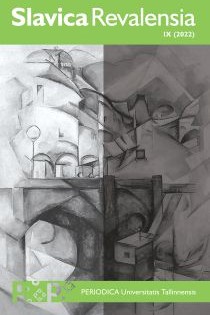Abstract
Discussing anachronisms in Alexandre Dumas’ The Three Musketeers, Umberto Eco concluded that most of them remain unnoticed by the Model Reader of the text as they are never located “in very strategic places” and can’t be identified without specialized knowledge that the Model Reader does not have. The article develops upon Eco’s observations, arguing that such “invisible” anachronisms are intrinsic to those genres of the novel that set the task of portraying a distinctive epoch, from Walter Scott’s and Leo Tolstoy’s historical fiction to Sergei Gandlevsky’s representation of the 1970s. If a plot and characters of the text are somehow related to particular historical incidents and persons, the scholarly commentary ought to pinpoint and explain anachronistic discrepancies, but the attempts of annotators to ascribe temporal exactitude to ahistorical narratives (e.g., Pushkin’s Eugene Onegin) are seen as futile and even harmful.

This work is licensed under a Creative Commons Attribution-ShareAlike 4.0 International License.
Copyright (c) 2022 Slavica Revalensia
